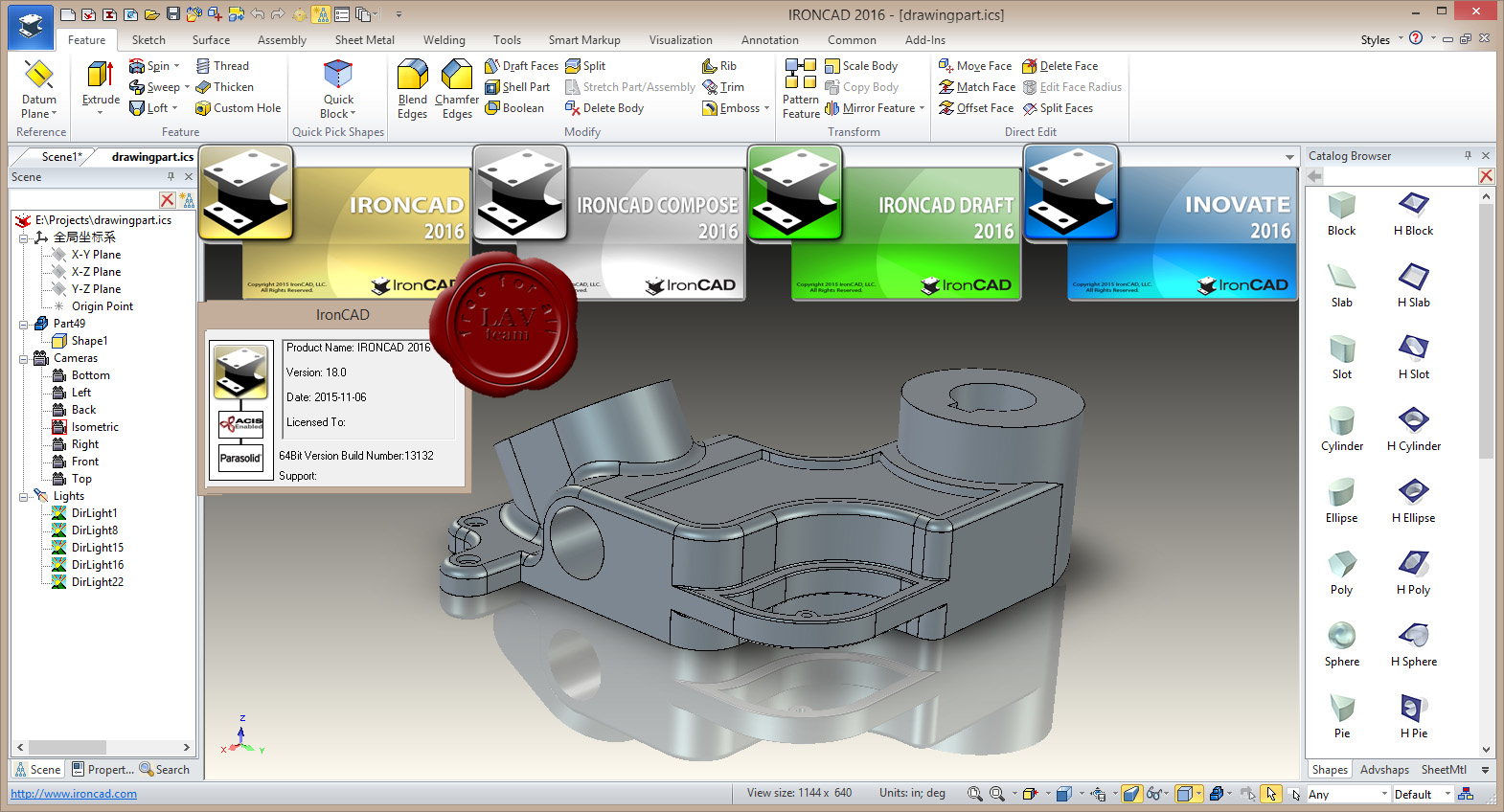

- #IRONCAD MECHANISM MODE PDF#
- #IRONCAD MECHANISM MODE MANUAL#
- #IRONCAD MECHANISM MODE SOFTWARE#
- #IRONCAD MECHANISM MODE PROFESSIONAL#
#IRONCAD MECHANISM MODE MANUAL#
The switch from manual to computer drawing took only five years, far faster than the change from typewriters to word processors!
#IRONCAD MECHANISM MODE SOFTWARE#
Rapid computer advancements and software improvements changed engineering and architecture. Screens were black and white and the mouse was not available. Early software emulated the drawing methods used on paper - line by line, circle by circle.
#IRONCAD MECHANISM MODE PROFESSIONAL#
With a 4.77 mhz processor and two 360k floppy disks it was possible to do professional drafting. In 1984 the first IBM-PC computers made drawing on a computer screen possible at reasonable cost. The 90 degree scales and a built in protractor increased productivity by 30 %. Plastic coated paper and Mylar plastic film are currently used for both manual and computer drawing plots.ĭrafting machines were an improvement over drawing boards and T-squares. Early drawings were created on starched linen cloth. Changing drawings and keeping drawings up to date was a major task. Manual drawing was exacting and time-consuming. IronCAD V9 & INOVATEFrom the time of the Industrial Revolution to 1984 drawings were made using drawing boards, T-squares, triangles, protractors, compasses and other mechanical tools. Many companies and schools provide INOVATE so people can work at home. Producting 2D working drawings is done by opening the INOVATE model files in IronCAD.

It is intended for use by designers who need to create 2D layouts, 3D solid models and assemblies. Nearly all the modeling features of IronCAD have been incorporated into this software. Working drawings for production may be created in the IronCAD Drawing Environment. Much less time is needed to learn to use IronCad. IronCad was written to create 3D solid models using clear, concise commands. 3D features were added to existing software resulting in unnecessarily complex commands to create simple shapes. As computer power and speed increased, the ability to represent three-dimensional objects became possible. Early CADD (Computer Aided Drawing/Design) software was programmed to emulate the way drawings were made as two-dimensional shapes on paper. IronCad is used to create computer models of objects for all types of engineering designs. Typical class schedules are posted on Textbooks with formatted sketching problems are availble from "Engineering Graphics Technical Sketching"by Jerry Craig "Engineering Graphics Text and Workbook" by Jerry Craig This allows students to see the relationships between visualizing with a sketch and modeling the objects on the computer. In our Engineering Graphics courses we introduce new CADD topics using freehand sketching. We appreciate suggestions on textbook content and TextbooksFreehand sketching skills are important for engineering and technical students. Downloads for problem files will be posted. Corrections will be posted as soon aspossible. Updates, Corrections and additional files for timely updates and downloads. Table of Contents1 2 3 4 5 6 7 8 9 10 10 11 11 11 11 11 12 13 14 Introduction TriBall 2D Drawing Geometry Animation Normal Surfaces Inclined Surfaces Oblique Surfaces Curved Surfaces Tools Catalog Assemblies Detail Drawings 2D Drawings Auxiliary Views Sectional Views Dimensioning Sheet Metal Mechanism Mode Importing / Exporting Index 5 35 59 79 95 109 125 137 149 171 176 195 196 199 201 206 217 233 245 249 Printed copies are available from: Schroff Publications 5424 Martway Drive Mission, Kansas 66205 (913) 262-2664 2 This textbook may not be sold in any form.
#IRONCAD MECHANISM MODE PDF#
IronCAD version 9 Series 9 Copryright 2007 All rights reserved.įair Use StatementThis Textbook in Adobe PDF fomat may be freely distributed for use in IronCAD training. IronCAD and Inovate version 9by Jerry Craig


 0 kommentar(er)
0 kommentar(er)
